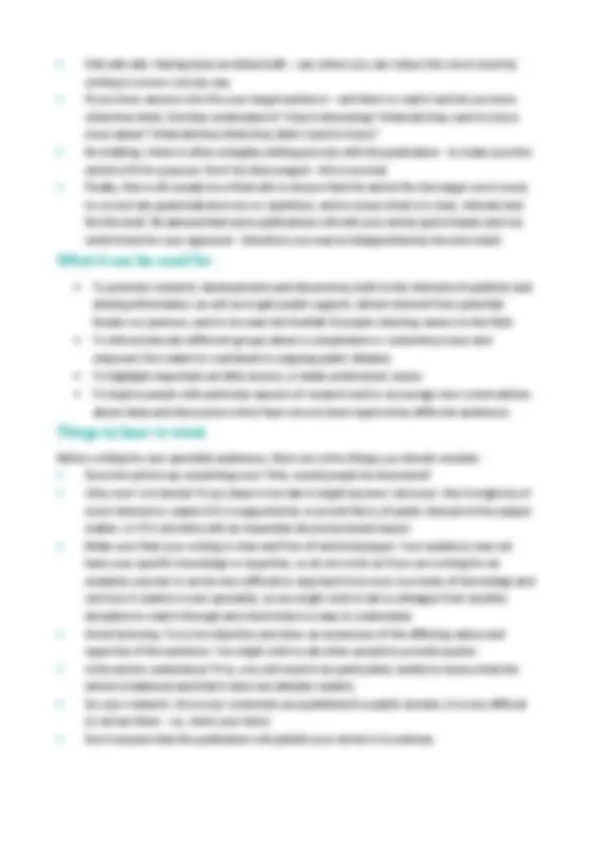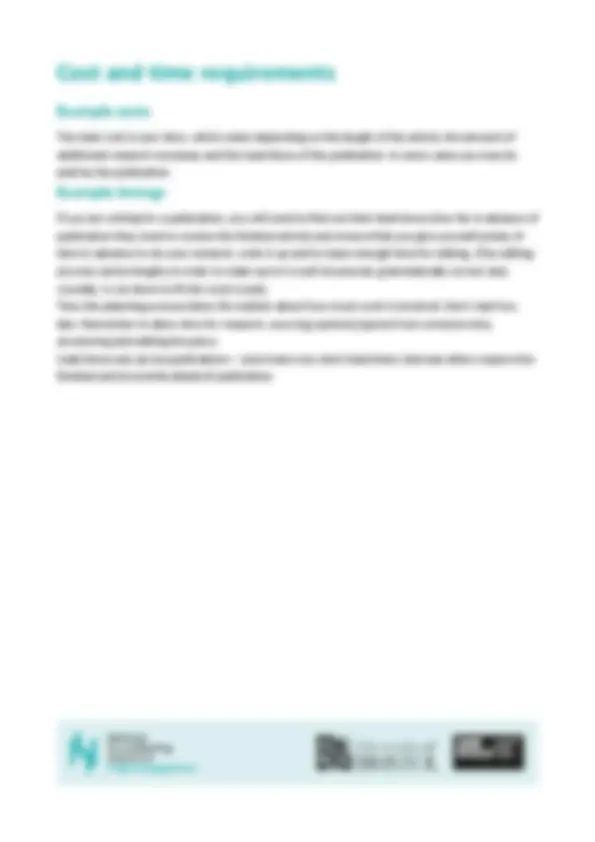




Study with the several resources on Docsity

Earn points by helping other students or get them with a premium plan


Prepare for your exams
Study with the several resources on Docsity

Earn points to download
Earn points by helping other students or get them with a premium plan
Community
Ask the community for help and clear up your study doubts
Discover the best universities in your country according to Docsity users
Free resources
Download our free guides on studying techniques, anxiety management strategies, and thesis advice from Docsity tutors
A comprehensive guide on how to write for non-specialist audiences, covering topics such as identifying the audience, preparing the article, writing style, editing, and the benefits of writing for non-specialist publications. It also includes important considerations before writing and cost and time requirements.
Typology: Study Guides, Projects, Research
1 / 4

This page cannot be seen from the preview
Don't miss anything!



Who are you writing for?
There are a number of different ways you might end up writing for a non-specialist audience
Getting started
Before writing anything, you need to follow the guidelines for any engagement process ie why you wish to communicate, what you want to get across (the purpose) and who you are trying to engage (the audience). If you have not already been approached by a publication this will help you to decide where to position the article.
If you are writing for an existing publication read previous content to get an idea of the 'style' and 'voice' of the publication. Think about the background of potential readers and their values. This will help you work out how to pitch the article to make it relevant, interesting and understandable to the target audience. If you have not already been approached to provide content, you will need to propose your article idea to your chosen publication. First find out the relevant contact point for the publication i.e. the editor, section editor or commissioning editor of the publication or blog. In many cases there will be guidance on submitting proposals on the publication's website. Send an outline of your article idea, paying close attention to the purpose of the article and the relevance to readers, (in order to display an understanding of the publication's aims and audience), and include an example paragraph. You need to outline your expertise, experience and, if you have a portfolio of previous writing for non-specialist audiences, include clippings.
Once you have the go ahead you will decide how to structure your writing. You may have a word limit – which may help you be concise.
Cost and time requirements
The main cost is your time, which varies depending on the length of the article, the amount of additional research necessary and the lead times of the publication. In some cases you may be paid by the publication.
If you are writing for a publication, you will need to find out their lead times (how far in advance of publication they need to receive the finished article) and ensure that you give yourself plenty of time in advance to do your research, write it up and to leave enough time for editing. (The editing process can be lengthy in order to make sure it is well structured, grammatically correct and, crucially, is cut down to fit the word count). Time the planning process takes: Be realistic about how much work is involved. Don't start too late. Remember to allow time for research, sourcing opinions/quotes from someone else, structuring and editing the piece. Lead times vary across publications – some have very short lead times whereas others require the finished article months ahead of publication.